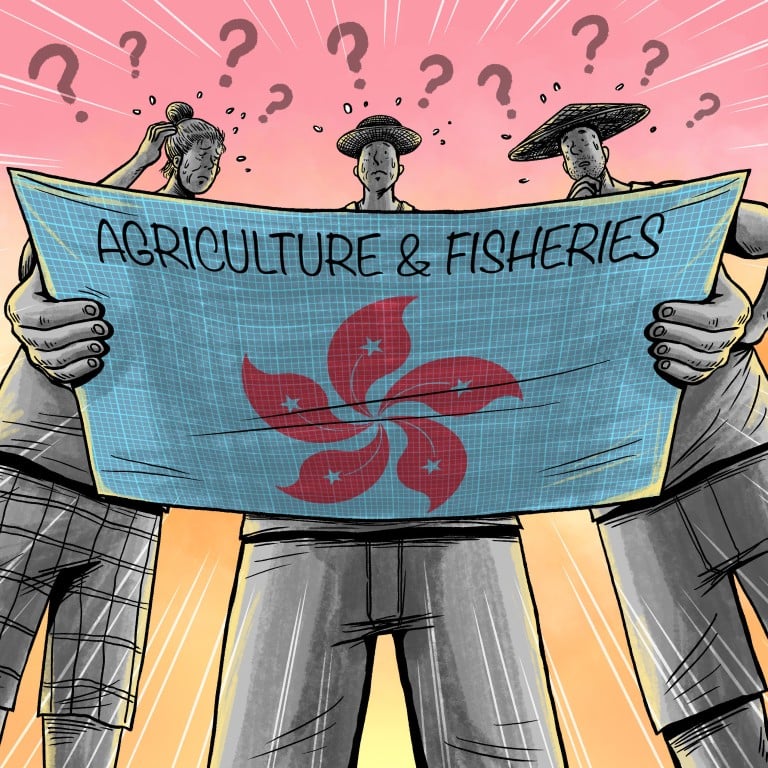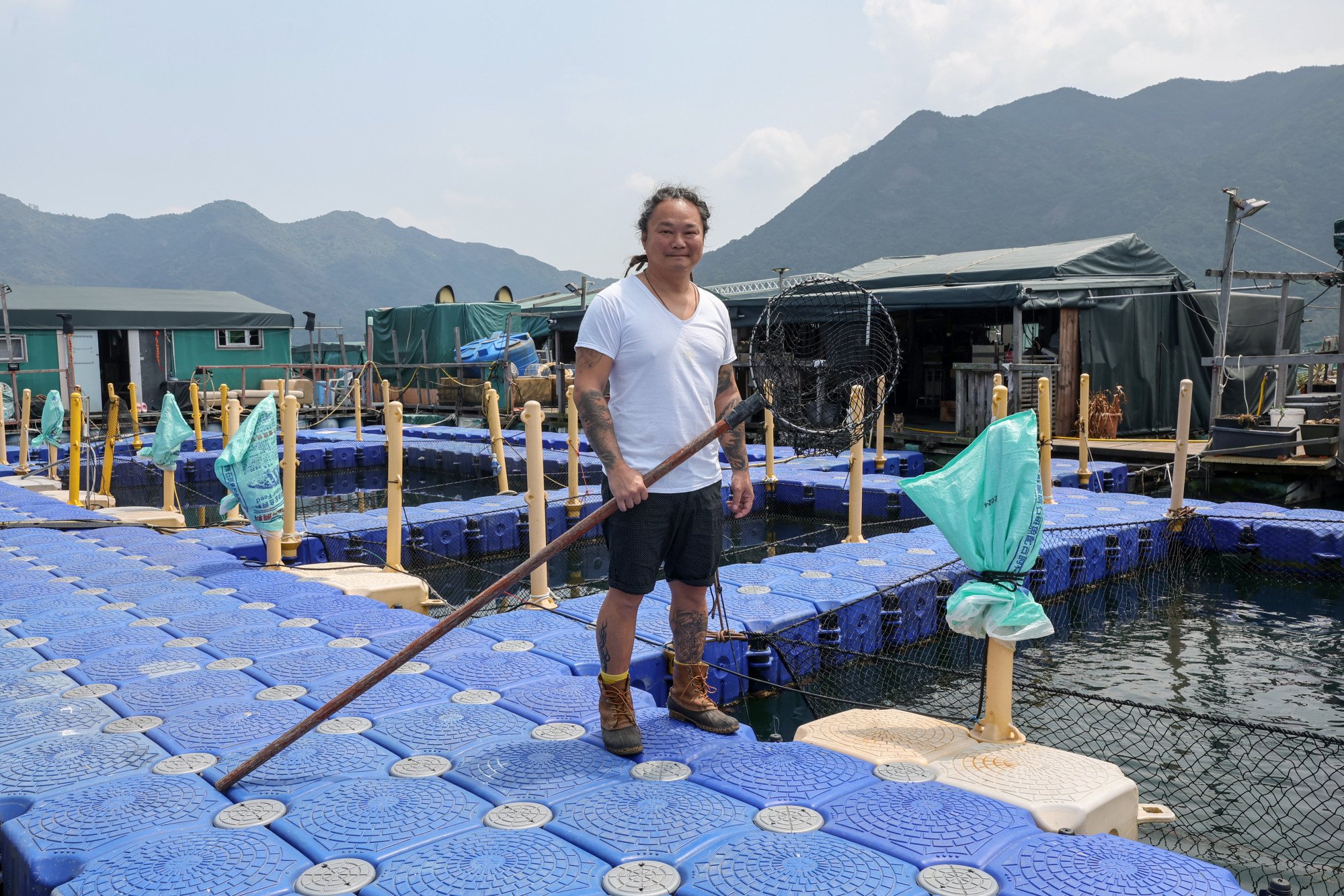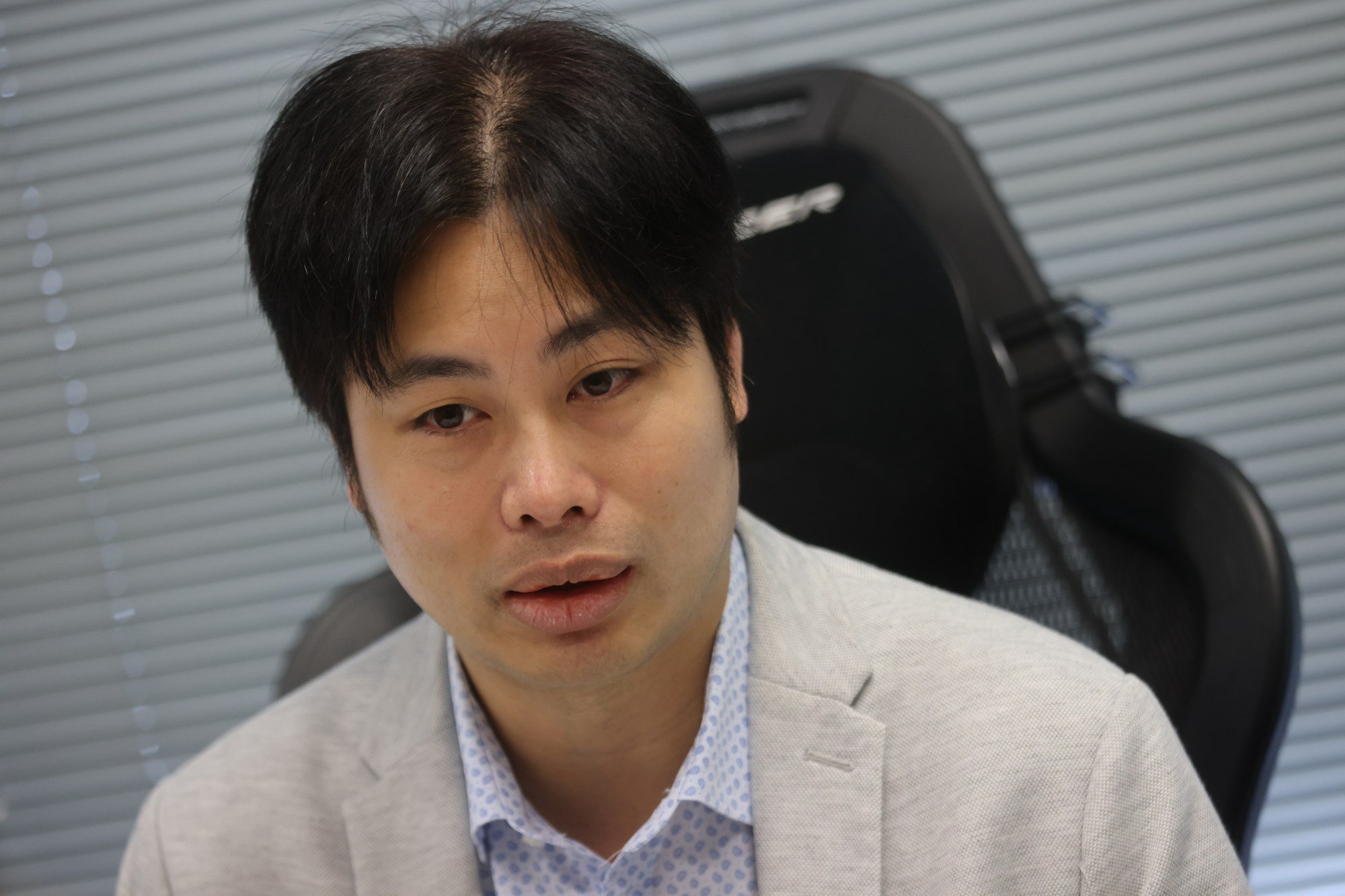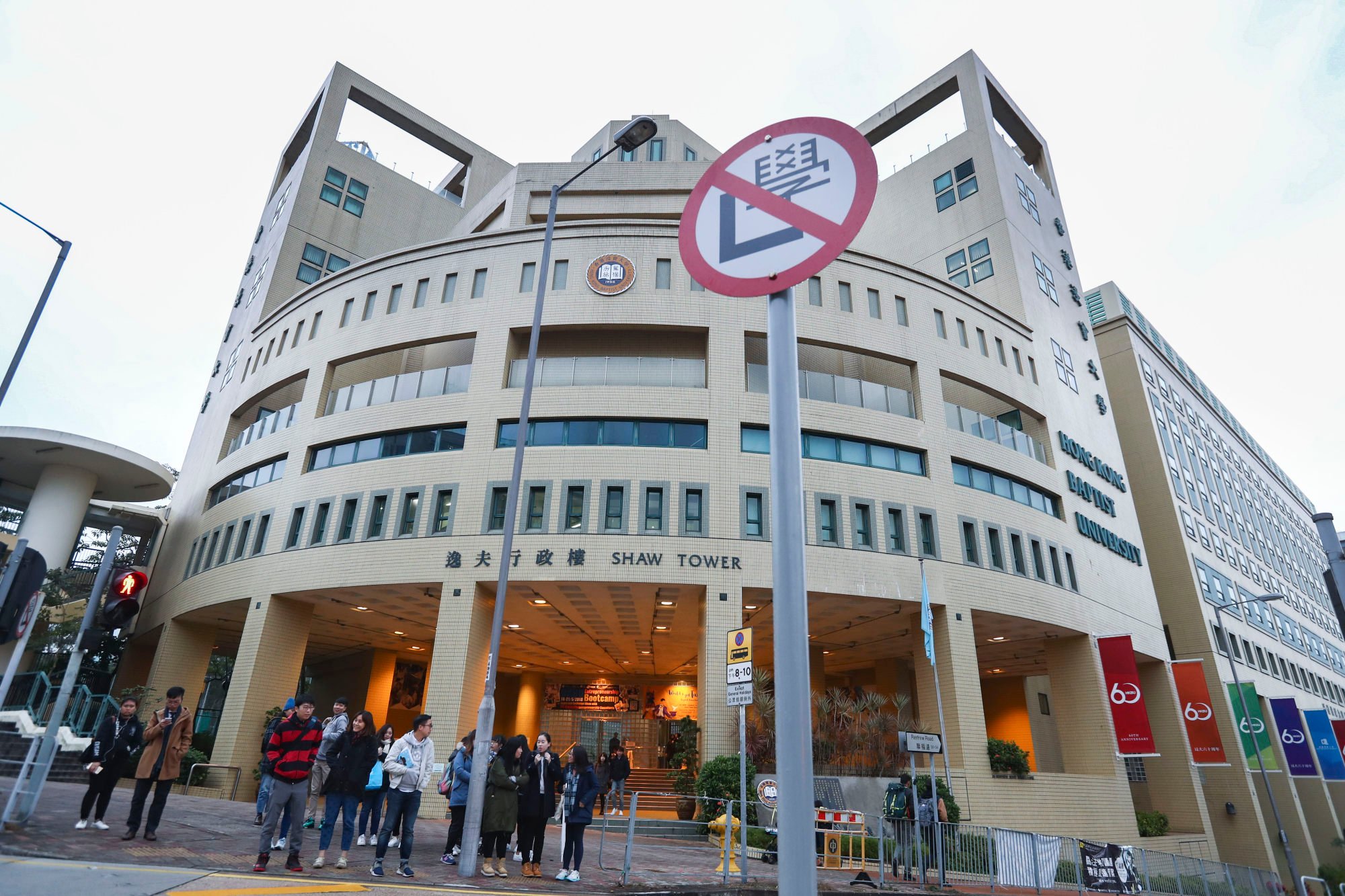
Can Hong Kong cultivate its agriculture, fisheries sectors? Experts say more policy support needed to tend to neglected farming scene
- Agriculture and fisheries blueprint outlines ambitious plans, but farming still viewed as a sunset industry
- Small number of young people drawn to agriculture courses at three universities offer hope for the future
From his floating farm off the coast of Hong Kong’s Sai Kung peninsula, Alex Lam Tsz-fung produces 200,000 fish each year for the city’s dining tables.
Experimenting with ways to reduce bacteria and increase the oxygen level in the water, he increased the survival rate of his fish fry. Mixing traditional Chinese herbs into the feed also helped boost their immune system.
His 20,000 sq ft farm, Hong Kong Aquaculture, produces five types of fish popular with residents – cobia, sea bass, pompano, spinefoot and batfish.
Lam, 48, said his goal was to produce nutritious, locally grown fish at affordable prices, pledging to keep the cost of a frozen pompano at about HK$50 (US$6.39).
His fish farm is one of 100 the Hong Kong government aims to work with to increase the supply of fresh fish by 10 times to 6,000 tonnes in the next 15 years.

That target was set by the Agriculture, Fisheries and Conservation Department (AFCD) last December when it unveiled Hong Kong’s first detailed plan outlining goals to develop and diversify the city’s agriculture and fishery industries and increase the output of food.
The Blueprint for the Sustainable Development of Agriculture and Fisheries aims to quadruple the city’s fish culture zones to 800 hectares (1,977 acres) and raise the production of farmed marine fish within 15 years.
It also aims to quadruple the annual production of vegetables from about 15,000 tonnes to about 60,000 tonnes, while all livestock farms will switch completely to efficient multi-storey farms, increasing the annual production by 10 per cent.
Industry players and experts welcomed the government plan to increase local food production, but said more concrete policies were needed to solve underlying issues and transform what many have come to regard as sunset industries.
“The government must change the public perception of agricultural development,” said Steven Ho Chun-yin, a lawmaker for the agriculture and fisheries sector.
“The stereotype that agriculture is not profitable has existed for decades and Hongkongers lack knowledge about the industry.
“Hong Kong is so small and people feel agriculture has no future, the land can be better used for real estate development.”
Local vegetable prices shot through the roof when supplies from mainland China were halted after cross-border truck drivers tested positive for Covid-19. An outbreak among slaughterhouse workers in Hong Kong shut fresh meat stalls in the city’s markets.
“We have a responsibility to provide part of the food supply for our residents so they don’t get affected too badly in times of crisis or a supply chain breakdown,” said Ho, who is from a fishing family and has been working for local fishery associations since 2003.
“We need to sustain fresh pork and fish supply for up to a week, to increase output when needed so Hongkongers still have a source of protein. We need to build these basic safety nets.”
Ho said farmers in Hong Kong were at a disadvantage as most rented their farmland and risked being evicted by landowners who preferred to leave their land abandoned while hoping to sell to developers.
Hong Kong imports most of its fish, meat and vegetables, much of it from the mainland.
According to official data, it imported more than 37 per cent of its food from the mainland, 7.3 per cent from Japan, 6.8 per cent from the US and the rest from 150 other sources last year.
The food front: US farmers see sales to China picking up and hope for more
Although Hong Kong has more than 4,000 hectares of designated agricultural land, more than four-fifths lies abandoned. Merely 8.5 per cent (345 hectares) is used for vegetable farming, employing only 4,300 people – 0.1 per cent of the city’s workforce.
Hong Kong produces under 2 per cent of the 780,000 tonnes of vegetables consumed each year, relying on daily imports brought from the mainland by 200 trucks.
The fisheries industry, valued at HK$2.3 billion, contributes 15 per cent to the local seafood consumption of 237,000 tonnes annually.
The city produces only 0.02 per cent of the eggs consumed, and 13.8 per cent of fresh pork from 43 pig farms.
All live chickens consumed in the city are produced by 29 farms in the New Territories, while all ducks and geese are imported from the mainland.
The government will open Hong Kong’s first urban farm in Ma On Shan this year, with a long-term view to introduce rooftop farms in every neighbourhood in the city.
The blueprint also outlined the use of hi-tech farming methods to increase production and also draw younger people to agriculture.
It highlighted plans to improve infrastructure and provide more financial, technological and human resource support, while strengthening trade organisations, improving the operating environment, encouraging diversification of industries and seeking opportunities on the mainland.
‘Farmers need help to collaborate’
Farmers, fish breeders and fishermen who spoke to the Post welcomed the government’s commitment, but said many proposals were vague and did not address deep-seated issues.
Yip Tsz-shing, 50, owner of the O-farm organic farm in Fanling, said the focus on output was wrong.
“Hong Kong can never compete with the mainland in terms of price or volume,” he said. “The value of the agriculture industry in Hong Kong should not be purely commercial, it can be education, it can be to produce greener food sources with lower carbon impact.”
He said the segregated local farming scene, with farmers operating independently on small plots, needed an overhaul to get them to collaborate and organise themselves better before it could become truly commercially viable.
He said Hong Kong farmers could only rent scattered plots from landowners and were unable to consolidate land to scale up or use more efficient machinery.
There was nothing to compare with Taiwan, for example, where hundreds of farmers would organise themselves to grow different varieties of wax apples in the same area to see which farm produced the best quality.
“Then researchers from the agricultural department gather the results and decide that all farms will plant that best species the following year,” Yip said. “That is the structure that is missing in Hong Kong.”

Lawmaker Ho said that while the blueprint mentioned multi-storey pig and chicken farms like those on the mainland, local farmers were not attracted by large-scale investment in technology because it took years before they saw results.
“Some of them in their 50s and 60s only operate on the basis of short-term returns and think it is not worth making the change. We need to convince them to switch now that the government is finally investing in it, or they might miss the opportunity.”
Keung Siu-fai, chairman of Hong Kong Fisheries Promotion Co, an organisation that helps fishermen improve their skills and organises public education events, doubted that the blueprint policies would truly benefit those who fished for a living.
The descendants of Hong Kong’s original fisherfolk, known as “on-water people”, still live with their families on boats in areas such as Aberdeen, Tai O and Cheung Chau.
About 10,000 fishermen operate more than 5,000 boats, facing competition from larger mainland fishing vessels.
According to the blueprint, the government aims to help them switch to “other sustainable operations, including aquaculture, leisure fisheries and offshore fisheries to achieve diversification”.
Keung said it was not clear what exactly lay ahead for the fishing community which also faced a shortage of manpower.
Most local deckhands were in their 50s and 60s and it was difficult to insure workers because of the risky nature of their job.

Fisherman Chow Mai-shing, 53, lives on his fishing boat with his wife, and spends up to 10 hours a day at sea, selling their catch of a few dozen kilograms at the market in Aberdeen.
A second-generation fisherman since the age of 13, Chow said he was illiterate and did not think he would benefit from government efforts to retrain people like him or get them to switch to other forms of fishing.
“I’ve been using the same technique all these years and I don’t know how to use gadgets or technology,” he said.
China’s agricultural corruption crackdown ‘far-reaching’ amid food security push
At the opposite end of the spectrum, successful fish farmer Lam of Hong Kong Aquaculture said it was hard to attract young, more educated residents to the industry because the barriers to entry were too high and government funding took too long to process.
He conducted a course on his rearing techniques for a handful of youngsters eager to join the industry, but said the conversation turned pessimistic every time they discussed starting their own farms.
“The start-up cost is about HK$6 million to HK$7 million, on top of the one year needed to rear a batch of commercially viable fish,” he said. “It will be a long time before you start making a profit, which bank is willing to loan such a large sum?”
Young Hongkongers drawn to farming
Like Hong Kong, Singapore is also reliant mainly on imports for its food supplies, with only a fraction of its needs supplied from limited farming space.
In 2019, responding to the food security risks brought about by climate change, the Singapore government announced its “30 by 30” target of producing 30 per cent of the city state’s food requirements by 2030 using only 1 per cent of its land.
Associate Professor Matthew Tan of the Singapore Institute of Technology said the country was on track to meeting its targets, with the government’s injection of S$309 million (US$227 million) for talent, infrastructure and technology.
“The government realised it had to rally citizens to play a part in the promotion of local produce so that our local farms can produce in a sustainable way,” said Tan, who chairs the Sustainable Development in Agriculture and Fishery Sectors in the Asia-Pacific Economic Cooperation’s Policy Partnership on Food Security.
Among other things, it is using blockchain technology to trace food waste and monitoring big data to track agricultural production and improve productivity.
It is also training the skilled talent needed to support the food goals.
“Before 30 by 30 was announced, the government rallied tertiary institutions to set up agritech-related diplomas and specialisation programmes,” Tan said.
“You must ensure you have a steady flow of manpower, including a pool of skilled engineers, who can support this.”
Solve root problems to help Hong Kong urban farming blossom: industry chiefs
In Hong Kong, a small number of young people are drawn to agriculture-related courses offered at three universities in the city.
Baptist University introduced the city’s first degree in agricultural science through its department of biology in 2019.
The university said a total of 79 students have enrolled so far, including 23 who were expected to graduate this academic year.
Students in the programme have to do a summer internship of between six and eight weeks in their second year. They also undergo training with overseas organisations to become licensed organic crop inspectors and have attachments at the AFCD’s experimental farm in the New Territories.
The first batch of graduates found jobs in agricultural and environment-related jobs in both the public and private sectors, while some have chosen to further their studies locally or overseas.
Polytechnic University’s Research Institute for Future Food (RiFood) has about 30 members from 10 faculties researching food sustainability and nutrition.
Kevin Kwok Wing-hin, the institute’s coordinator for food sustainability, said the constraints in Hong Kong pushed researchers to think out of the box.
“An agricultural university in other countries might have an experimental farm the size of Sha Tin, but that’s impossible here, so we are forced to think of new ways to innovate, coming up with solutions traditional farming industries may not think of,” he said.
For example, the institute was working with a hydroponics farm to experiment with adding calcium into vegetables to solve the issue of calcium deficiency in Hongkongers.
He said he expected that health-conscious consumers would not mind paying more for better nutritional value.

Kwok said that with developments in agricultural technology and successes in other countries, more young people have begun to view farming as a viable career option.
“We have many partner farms whose owners are in their 30s and 40s, who know that hi-tech farming methods can help them increase their output and have huge growth potential,” he said.
“They are very open to new ideas that can raise productivity and reduce manpower.”
Lawmaker Ho said young people could also consider opportunities at mainland universities with agricultural expertise.
“We have many outstanding institutions, such as the Ocean University of China and the China Agricultural University, which is the oldest in the country, so there are plenty of opportunities for exchanges,” he said.
Meanwhile, some developments are already in motion as Hong Kong acts to strengthen its food security.
Hong Kong lays out food production goals, but can it find enough land and workers?
The AFCD said the 80-hectare Agricultural Park in Kwu Tung, which has opened in phases since 2022, would provide a stable land supply and secure land tenancy to farmers and this would go towards making structural changes to the local agricultural industry.
The department was also looking into designating Agricultural Priority Areas in the New Territories with incentives to encourage landowners to put fallow agricultural land into long-term agricultural use.
It said the two initiatives would help crop farms adopt modernised farming methods and commercial production, resulting in more than a 50 per cent rise in productivity.
“Assuming that two-thirds of farms will be engaged in open-field production whereas the remaining will adopt greenhouse or hydroponic production, the target annual vegetable production volume will increase four folds from 15 000 tonnes in 2023 to about 60 000 tonnes in 2038,” a department spokesman said.
For rooftop gardeners, urban farming is a form of ecotherapy
The department said it was working with the Hong Kong Institute of Vocational Education to offer short courses on mariculture and freshwater aquaculture, and also trained start-up farmers in operating hydroponic farms.
Ho, the lawmaker, said he was confident Hong Kong’s agriculture sector could turn into a self-sustaining industry, with the Agriculture Park as the first step to connecting farmers and solving the long-term land issue.
“Hongkongers are willing to fork out HK$800 for a piece of Japanese Wagyu beef, but are not willing to pay the same for locally farmed meat,” he said.
“Our selling point should be quality instead of price, and make locally farmed meat part of Hong Kong’s branding and sustain the agriculture industry so we can also increase production in times of crisis.”

